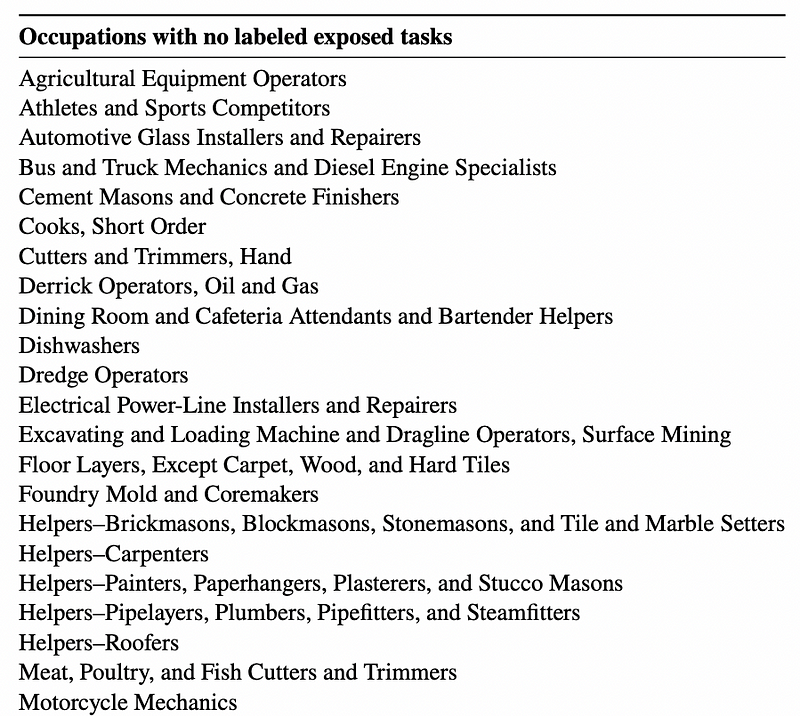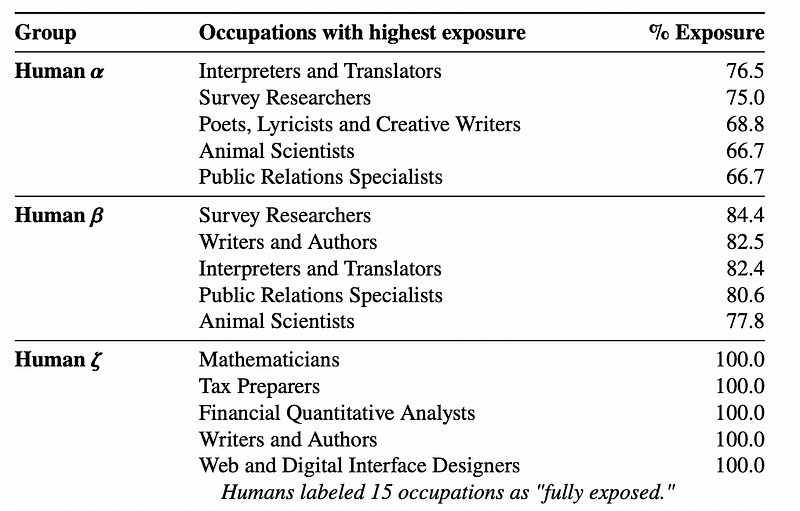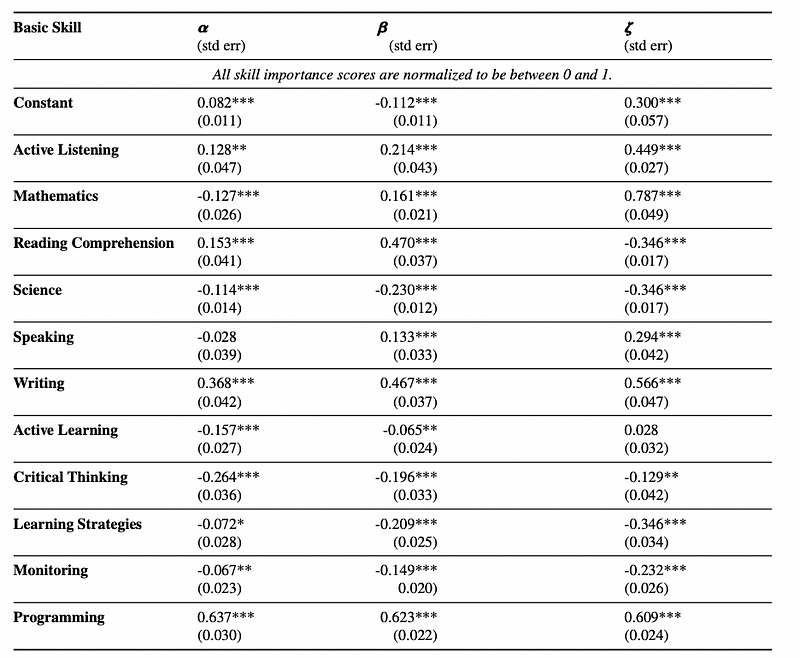Navigating the Future: Job Displacement Risks from GPT-4
Written on
Understanding the Impacts of GPT-4 on Employment
OpenAI's recent release of GPT-4 has stirred considerable concern among professionals in various fields, particularly writers and programmers. The introduction of this advanced version of ChatGPT brings not only enhanced capabilities but also significant implications for the workforce. A notable study titled "GPTs are GPTs — An Early Look at the Labor Market Impact Potential of Large Language Models" sheds light on these effects.
In case you’re unable to delve into the full 35-page paper, here’s a summary of the essential findings.
About the Research
The study investigates the possible consequences of large language models (LLMs) like GPT-4 on the job market in the United States. The researchers found that approximately 80% of the U.S. workforce could see at least a 10% reduction in their work tasks due to LLMs, with nearly 19% of employees facing a potential impact of 50% or more on their duties. Notably, all wage brackets are anticipated to be influenced, with higher-paying positions likely experiencing greater effects from LLM technologies and software.
How the Impact Was Assessed
The researchers defined "exposure" as the degree to which access to an LLM could reduce the time needed for a worker to complete a specific Detailed Work Activity (DWA) or task by at least half. They utilized the O*NET labor database to sample various occupations, tasks, and DWAs.
For instance, here’s a sample from the O*NET database:
- Occupation Title: Online Merchants
- DWA: Execute sales or other financial transactions
- Task Description: Deliver email confirmation of completed transactions and shipments.
The study categorized exposure into three levels:
- No Exposure (E0): Minimal or no reduction in task time due to LLM.
- Direct Exposure (E1): LLM reduces task time by at least 50%.
- LLM+ Exposed (E2): Additional software reduces task completion time while maintaining quality by at least half.
Following the classification of occupations into tasks and exposure levels, experts and GPT-4 were consulted to ascertain the exposure levels for various DWAs.
Occupations That Remain Unaffected
Let’s first highlight jobs that show no exposure to LLMs. Here’s a glimpse of occupations that are less likely to be impacted.

The study indicates that most of these roles are manual labor positions, with manufacturing, agriculture, and mining being among the most secure industries. Perhaps it's time to consider a career shift towards these fields!
High-Income Roles at Risk
Interestingly, the findings suggest that high-income roles are at a greater risk of being affected by LLM capabilities. Many of these positions require advanced education, indicating a troubling trend: the more educated an individual, the higher the likelihood of job displacement.
The paper also lists occupations with the highest exposure, as determined by both human experts and the models.

It’s important to note that “exposure” indicates a reduction in task completion time by at least 50%, rather than the complete automation of these jobs. So, before you consider leaving your educational pursuits behind, remember to continually enhance your skills to adapt to the evolving landscape.
Skills and Their Correlation with Exposure
The study also delves into the relationship between specific skills and exposure levels. It reveals that critical thinking and scientific skills are inversely related to exposure, while programming and writing skills show a strong positive correlation. This suggests that roles requiring critical thinking are less vulnerable, whereas those in programming and writing may be more susceptible to the influence of LLMs.
Here’s a visual representation of the skills analyzed.

Should We Take This Research Seriously?
Despite the extensive research behind the GPT-4 report, some industry leaders remain skeptical. Lightning AI CEO William Falcon commented on the complexity and perceived lack of transparency in the OpenAI document, stating it does not meet scientific research standards, as third-party developers cannot replicate the experiments described.
The future of high-exposure jobs remains uncertain, and while it may initially appear that many roles will be eliminated, generative AI could also pave the way for the development of new products and services, leading to fresh job opportunities.
Personally, I choose to remain optimistic about this potential for growth.
Join my newsletter with over 20,000 subscribers to receive my free ChatGPT cheat sheet.
Chapter 2: Video Insights on AI and Employment
The first video titled "Ex-OpenAI Employee Just Revealed it ALL!" provides insider perspectives on the implications of AI in the workforce.
The second video, "Will GPT Take Your Job? OpenAI's Latest Study Reveals Jobs At Risk," discusses the findings of OpenAI's research and its impact on various professions.